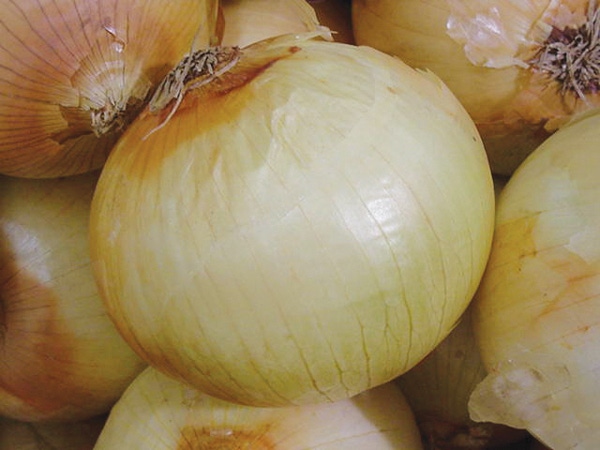
A depressed onion market last month is showing some early signs of recovery, providing a glimmer of hope to Texas onion producers that this year’s smaller harvest will help to erase the memory of heavy losses experienced last year when the market tanked because of large inventories that exceeded demands.
“Last year was a bad year for selling onions,” reports Texas Produce Association’s John McClung. “After a strong market in 2010, producers planted heavy in hopes of another good year. But in the end, supply was greater than demand and it resulted in low market prices.”
In response, growers reduced onion acres significantly this year, as much as 20 to 30 percent across the state, bringing total acreage for the 2012 crop down to about the same number of acres planted in 2010 when demand was up and prices historically high. At last count, Texas growers planted a combined 9,430 acres of onions. That compares to last year’s 13,000 plus acres of onions.
“Onion acres in the Valley are down significantly and growers around Uvalde and the entire Winter Garden area planted very few onions because of water availability related to the drought,” says Don Ed Holmes with the Onion House in Weslaco. “This has resulted in a much smaller crop.”
Also of significance are fewer onion acres in Mexico this year. Holmes says heavy rains and storms there resulted in a much smaller crop, paving the way for Texas onions to enter the market. As the last of the Mexican onions are shipped out this month, the timing of the Texas harvest will help keep the supply of onions steady.
More promising to Texas growers is the movement of market prices. In mid February wholesale prices had dropped as low as $4 for a 40-pound box of onions, but by the second week of March prices were up to nearly $7 a box.
“And we have reason to believe that by the time Texas onions hit the market later this month and into April, the wholesale price will continue to inch up,” Holmes said, speculating that wholesale prices could reach double digits in the weeks ahead.
But, and as always, much depends on weather in the coming weeks.
“Rains last month came at a good time for onions in the Valley. But what we need now are some sunny days and drier conditions to finish off the season. We have had enough dew and if we get any significant wet weather before harvest it could begin to affect the quality of the crop,” Holmes warns.
As it stands now onions in the field are in excellent shape and yields look “very promising.” If the weather doesn’t dampen expectations, he predicts 2012 could represent a return to brighter days for the Texas onion industry.
Marketing
In addition, marketing continues to play a major role in the industry’s success. Long-day onions grown in Idaho and Oregon have a long shelf life, meaning there is generally a good supply of them available to retailers long after the growing year. But “short-day” onions, those historically grown south of Amarillo, are sweeter onions and are in greater demand by retailers and consumers.
“Sweet onions are an entirely new category for producers. Consumers and retailers want the sweeter onions and growers in Texas are sitting in the driver’s seat when it comes to meeting this demand,” Holmes says.
McClung says early harvest is just now getting underway in the Valley but the bulk of harvest will take place at the end of March and early April. If weather cooperates and market prices continue to inch upward, 2012 could prove to be good year for Texas onion growers.
“Farmers are traditionally optimistic,” adds Holmes. “But when it comes to the possibility of a good onion crop this year, I think we have reason to hope for a good year. A lot of farmers opted to grow corn or cotton this year after last year’s tragic onion market crash, and the fewer acres combined with a shorter supply from Mexico is going to give us a chance to do well this year—as long as the weather cooperates.”
About the Author(s)
You May Also Like






